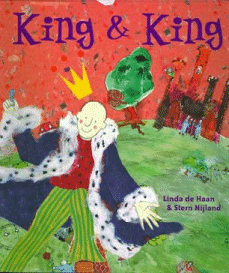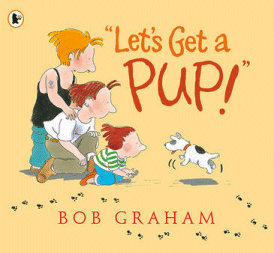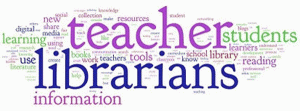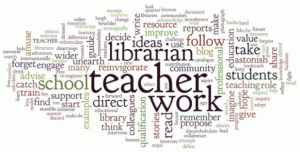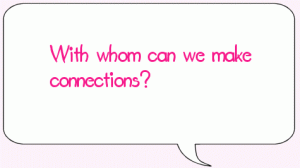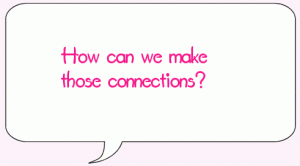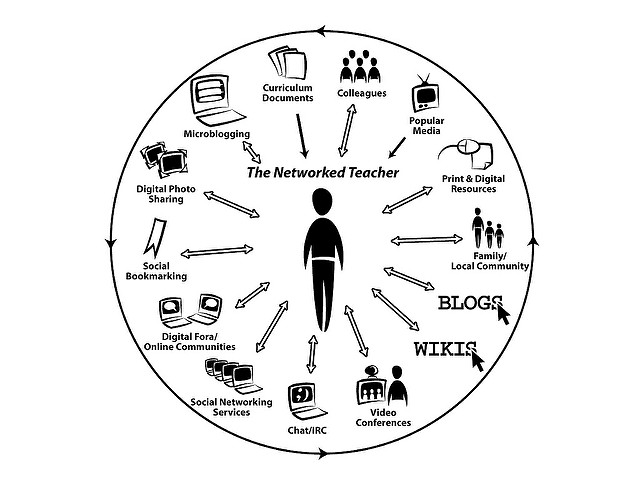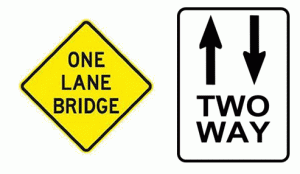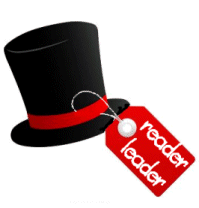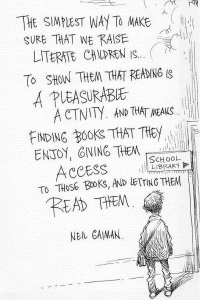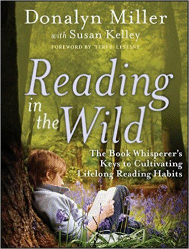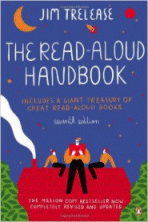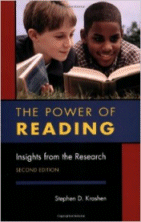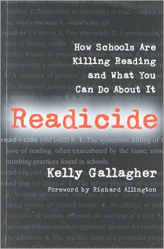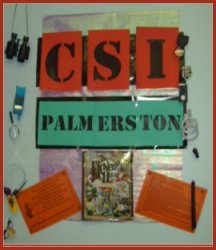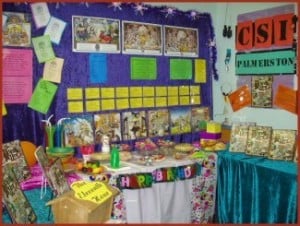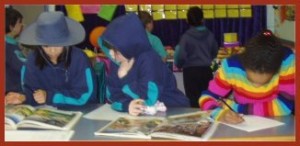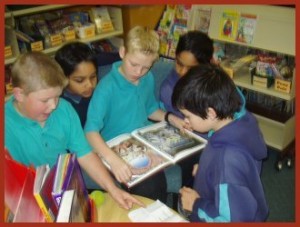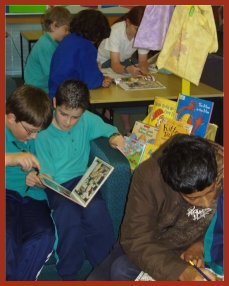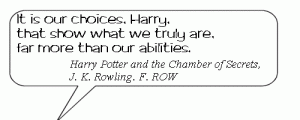In a recent edition of the School Library Journal there was an article entitled, King & King – and teacher who read it -under fire in North Carolina in which a teacher read a book to his class and now finds his job in jeopardy.
The book in question is from 2003 and is about a prince who marries another prince and was read to a Year 2 class in response to an issue where a child of same-sex parents was being bullied.It also fit into a unit of work being undertaken focusing on fractured fairytales. The outcome has been outrage and now all books that are not in the library’s collection which are going to be read to a class by any teacher need to be submitted to the principal and parents for prior consent.
If you are unfamiliar with the story, there is a (biased) synopsis including pictures here. It’s not the first time it has caused controversy.
Curious about how Australian parents, principals and peers would respond to the issue of such tricky topics being included in the collection and shared in the classroom, I posed the question on Facebook to both personal and professional forums. I asked parents how they would respond to their young children being ‘exposed’ to stories about non-traditional families, specifically same-sex and whether they would require advance notice; principals about whether they would require to know in advance if such a story were going to be shared; and teacher librarians about their inclusion and handling of such resources in their collection.
The results were very interesting.
- Parents were almost unanimous in their responses that they would have no problem with such a focus because they had had such discussions in their families already, their children knew and mixed with such families and that they are just part of the fabric of society. One parent would like a heads-up so that she was prepared for any questions her child might have, but being in a non-traditional solo parent structure herself, she saw the value of celebrating such diversity.
- The principal who responded also want a heads-up so she could field any parental response but would definitely support the sharing of such literature because she trusts the TL’s professionalism and knowledge.
- Teacher librarians were divided – some felt that to read it without prior approval from parents would be “outrageous and create uproar”; another said we were not censors and if a story was worth sharing it should be shared; and others said such family structures and other issues are part of life and to not share them marginalises those who are “different” even further and questioned whether studies of families and communities without acknowledging all structures would be valid. Given the hot topic of marriage equality in Australia, there were those who felt TLs had a duty to help older students be informed about the issues and that literature was a non-personal way of doing this.
Inspired by the diversity of opinions among the teacher librarian fraternity, I then posed the similar questions to three TL online networks, one state, one national and one international.
Should we be required, as teacher librarians developing the collection and as teachers sharing stories with students, to inform our principals and parent body in advance that we are intending to do share stories that may be controversial?
While we are happy to share stories about children with physical disabilities, mental health issues, particular illnesses and different cultural, social and religious backgrounds as we try to promote the message that these things should not define the person or their worth, why are we so divided about stories which feature different family structures, sexual orientation or assisted reproduction?
Without even going into the specifics of the opinions, the results were interesting. There were three responses from the state list, three from the national list and a volume from the international list. This pretty much reflected my expectations based on experience of asking similar “deep questions” – for whatever reasons, local TLs do not respond to challenging issues that are put before them so that there can be discussion and debate and corporate growth of knowledge. However, if someone asks a relatively simple question that can be answered with a search of Google there will be a flood of responses, as there will be if someone is flamed or the profession is threatened, so “lack of time” cannot be the reason more meaty issues are left hanging.
The responses from the local list focused on the need for a Collection Policy and a Challenged Material policy and the statistics relating to the prevalence of LGBTI issues in our community – “1 in 2,000 births in Australia have “sex disorder” or are intersex – (unsure due to non reporting) and about 11% of Australian gay men and 33% of lesbians have children and around 10% of Australian population identifies as gay and lesbian.” The other three who responded supported the “mirrors and windows” view of the collection – resources should mirror the lives of the students and give them windows into new and diverse worlds, and that such titles supported inclusivity of students. However there was concern about the age of the children involved because they don’t ‘understand’ the issues while another argued they don’t need to ‘understand’, that young children do not see things through the adult lenses that we apply and all they are seeing and hearing is a story about families with which they are already familiar.
The discussion on the international list was very robust and a range of issues was raised. Here are some quotes taken from responses that formed the core of the person’s argument …
- “Kids are living this way. Just as kids deal with child abuse, parents getting killed by the other parent, rape, incest, drugs and such- these days kids deal with transgenders and gay parents. People, teachers, principals and librarians need to be on board.”
- “However, I also recognize that some people do have an issue with homosexuality and same-sex marriage, and that makes it a controversial topic. But shouldn’t this be a part of education? Learning about things that are different than what we experience? Making us think about our values and behavior, in order to develop critical thinking skills and, hopefully, kindness towards all? “
- “[Such] are all particularly controversial because they question some of every society’s most deeply-held convictions about some of the most fundamental questions we can ask: about bodies and their constituent parts; how people relate in and to their and other bodies; how people are attracted to other people, and to whom they are attracted; etc”
- “The teachers are not the parents. I, as the parent, may want handle it differently than a teacher would and I would like to know how the topic is being introduced to my child.” “Addressing sexual preferences with young students is felt by many (and I include myself here) as usurping parental, religious and cultural roles” (Usurping the parent’s role was a common thread.)
- “I have worked with enough feminist and pro-LGBTQI teachers who, on these two topics, trended toward calling all those who disagreed with them as mysogonistic [sic} and ironically bigoted…continuing to expose students to these concerns may seem to desensitize them so that they begin to sympathize with protagonists, identify with certain foci, but what it actually does is offend if it’s not aligned with the student’s personal lifestyle choices.” (Teachers pushing personal agendas rather than using texts in relation to the curriculum was also suggested several times as was the marginalisation of students who did not share the teacher’s viewpoint)
- “Normalizing behaviors does not make it right. Religion does not give room for changing views as needed based on society’s expectations.” (The religious element was raised and debated back and forth.)
- “This was a teachable moment, and he seized the moment appropriately.” (Another common thread.)
- “When we talk of Mummy and Daddy, are we also talking about their bedroom habits? No, so why do we seem to focus on this whenever the issue of same sex parents is raised? Sex, is the underlying issue that causes people to question books such as King and King, but the book itself has no sexual content.”
- “I will read civil rights and anti-racist and feminist and anti-ableism books with gusto, but I have to be more cautious than my straight colleagues about queer matters [for fear of losing my job]”.
- “I feel that to purposefully shield students (especially if they’re middle- or high-schoolers), to close them off from any resources from which they can learn about it, is to do them a disservice.”
- “… I must also be sensitive to the needs of my student community, many of whom are LBGT, even if this hasn’t become part of their verbal identity yet at age six and seven. Many more have parents who are LBGT. Even more than that know people in their lives who are LBGT. It can be a very scary thing to live in a community in which the books and media around you show no mirrors or windows. We really do owe it to our children to show them that life is different in different places.”
- “Refusing to have materials on specific topics in the library collection and/or purposefully choosing not to read aloud those materials is, itself, teaching. It is teaching children that these are not acceptable topics to discuss. It is teaching children that these are topics that must be kept hidden away. It teaches that the viewpoint of the materials offered and read aloud are the truth and the only acceptable opinions. I think it is a huge disservice to ourselves, our students, and our communities when we assume that not directly teaching these topics means that we are not teaching them. We are teaching by omission.”
- “Straight romantic relationships are seen constantly in children’s literature, not to mention other forms of media. Stories of families coping with divorce, death, and abuse are also part of kids lit and aren’t censored. Stories with single parents, grandparents raising children, adoptive families, etc.; all of these scenarios fall outside of the so-called “traditional” family unit and should be represented in our libraries and our classrooms. A story showing a same-sex relationship is no different. It is representation of the world today.”
- “Remember, LGBT students can and do come from “traditional” families where they are the only ones in their family (immediate and often extended family too) who are LGBT. This is not the case for most other minority students. Most African American students, for example, grow up in African American families where their family members know exactly what it is like to be African American and the types of challenges they uniquely face. For LGBT students whose family are straight, cisgendered folks, their family does not know and understand what the LGBT student faces. In worst case scenarios, that family might even abuse them or disown them for being LGBT. It is therefore up to us to be a safe place for these students. To create that safe place in our libraries and our schools and to provide representation and understanding that they may not receive at home.”
- “How can change be effected if we do not present students with alternatives to the status quo? How much of the acceptance and integration and celebration of minorities would have been achieved if “brave” teachers had not introduced the writings of ground-breaking authors to students? “
Clearly this is a divisive and tricky subject within our profession so then I posed the question about how such resources were treated within the collection so that there was acknowledgement of and sensitivity towards all the stakeholders. Many teachers get students to select the books for the class library and the children do not discriminate; even within a section such as ‘Junior Fiction’ there is a diverse range of age and maturity so how to cater for this; if a child self-selects a book that a parent reads to them without prior knowledge of its content, so should there be some sort of warning label (which then makes them more than they are, gives them a mystique they should not have, suggests that the topic is taboo, and may marginalise those who choose to borrow them perhaps even making them a target.) Or should they just be placed in the collection and we hope for the best? Is it better to beg forgiveness later than ask permission first? Do we need permission? Should we need to ask for forgiveness?
The only response has been that this should be covered in the Collection Policy that has been ratified by the school executive, but how should it be worded if the Collection Policy is being written or reviewed? If the school executive is to approve the policy then it needs to be in alignment with the school’s policy (and many schools may not even have such a document) and offer guidance that they are comfortable with.
The Australian School Library Association’s Bill of Rights mandates
To place principle above personal opinion and reason above prejudice in the selection of materials of the highest quality in order to assure a comprehensive collection appropriate to the users of the library.
Collection development cannot be driven by the personal prejudices rather than professional practice whether those prejudices are more liberal or more conservative than the school’s ethos. Therefore I have asked my school executive to discuss how they wish to proceed so they are comfortable with supporting the library’s policy and procedures and are willing to defend them if necessary. I’ve drafted the wording of this section of the collection policy as a starting point for them and I’ve also shared this Pinterest board of resources so they are familiar with the sorts of titles that would be included in the library’s collection because currently there are none. I’ve offered to take it to a staff meeting for discussion and suggested that there may need to be input from the Student Representative Council.
Censorship is not part of the teacher librarian’s toolkit but sensitivity should be. Despite the range of opinions about this subject, there is agreement that it cannot dwell in the too-hard basket. What would you do?
In May 2016 United States president Barack Obama officially proclaimed June 2016 as Gay Pride Month. If the provision of resources that support our right to our own gender identity and sexuality and explain it to others is all that we can do to support those so continually discriminated against, then that must be better than putting our heads in the sand. A Mighty Girl has released an annotated list of their favorite books featuring lesbian, gay, bisexual, transgendered, and queer/questioning (LGBTQ) characters. It should provide a start to a collection that promotes inclusion while celebrating diversity.
This article from School Library Journal is worth reading and considering in light of your circumstances and professional practice. Unnatural Selection: More Librarians Are Self-Censoring
You might also like to consider the issues raised in The Censor’s Hat.
Parents Are Divided Over a Book in a Popular Student Reading Program in Oregon
One of a number of lists of recommended titles available focusing on gender identity.

